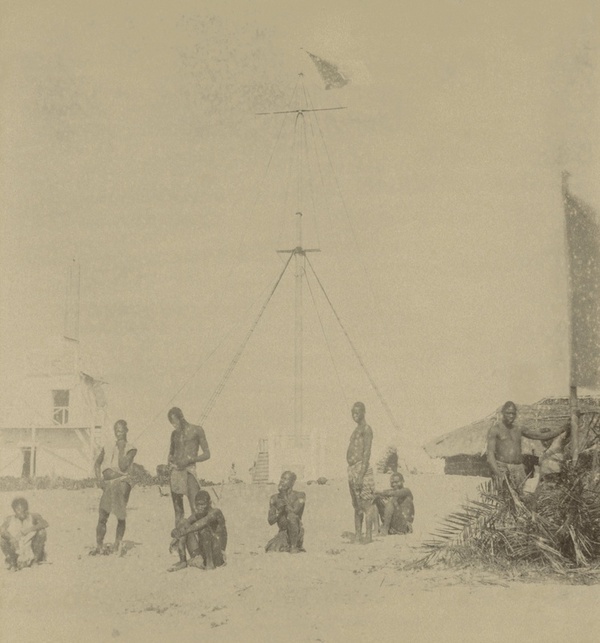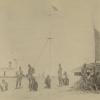Reporting progress - or repression

Quelimane - Entrada da barra a 18 milhas, posto do pharol, signal e telegrapho
During the second half of the nineteenth century, the electric telegraph became part of the colonial landscape. The Portuguese created telegraph networks in Mozambique and the Belgians did the same in the Belgian Congo. These networks were not only used by the colonial governments, but sometimes against them.
Telegraphs, along with railways, served an important role in ruling colonies in the nineteenth Century. This was often done by private companies such as Zambezi company in Portuguese Mozambique, in co-ordination with state authorities. Often built alongside railways, they enable swift contact with home countries, but they could also call rapidly for troops in case of native rebellion.
In 1885, the Belgian King Léopold II established the "Free State of the Congo" in central Africa, run through a private organization. This existed almost entirely to extract rubber and ivory to Antwerp using a system of coerced labor that decimated the native population. The cruelties caused a clash between Léopold and what would become the first international human rights movement of the twentieth century. The two camps became absorbed in a media campaign on both sides of the Atlantic in which cameras and telegraphs played a key role.
Under the leadership of the British-French journalist Edmund Morel and British Consul Roger Casement, the Congo Reform Movement gained support from all over the world. To control the message, Léopold kept tight control of the telegraph connection between Congo and the rest of the world, and routinely banned unfriendly journalists. Several journalists, missionaries, and African parishioners secretly sent photographs, documents, and letters to Morel by post or, if possible, via the telegraph.
Morel used these materials to produce numerous journal articles and pamphlets in French and English about the massacres and he spread these materials to all corners of the world via the telegraph.
 Previous Story
Next Story
Previous Story
Next Story
How to cite this page
Suzanne Lommers, 'Reporting progress - or repression', Inventing Europe, http://www.inventingeurope.eu/story/reporting-progress-or-repression
Sources
- Hochschild, Adam. King Leopold’s Ghost: A Story of Greed, Terror and Heroism. London: Pan, 2006.


















